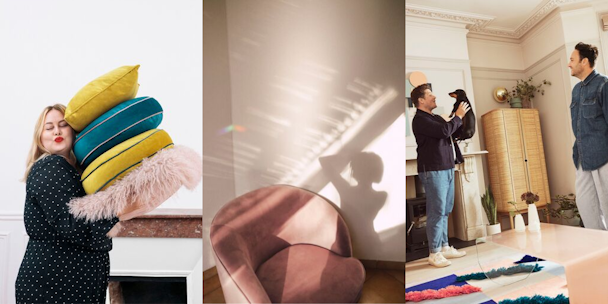Made.com is getting cosy home-making influencers to entice 'nosy' audiences
Online furniture retailer Made.com has put out a call to arms for content producers to become a part of its next advertising campaign, indicating how serious it is about building up a loyal base of brand advocates.

Made.com callout for 'real homes from real fans' in new UGC-inspired campaign
Using #MADEdesign on social media, the retailer has enticed customers and fans to submit 'design your happy place', baited by the chance to appear in an ad campaign carrying the same name.
“People are really nosy - they want to see what’s inside people’s rooms,” Lauren Spearman, head of brand advocacy told The Drum.
Made.com knows user-generated content (UGC) is more trusted by consumers than the staged images it delivers from its studios, and is trying to catalyse these.
When Made.com's revenue increased by 37% to £173m in 2018, its chief exec Philippe Chainieux credited “digitally native” customers feeling more comfortable about buying big-ticket items online.
To loosen purse strings, showrooms and physical tests are crucial, but not far behind is seeing real people using the furniture in their households. Made.com has eight showrooms in Europe so the majority of its audience does not have the luxury of visiting. It is reliant upon its squadron of content creators who open up their homes.
“According to the Nielsen Consumer Trust Index, 92% of customers trust organic, user-generated content more than they trust traditional advertising,” said Spearman, who believes that influencers purpose should not be to influence people, but to be influential.
Head of brand advocacy
After she oversaw advertising and implementing an influencer strategy at Benefit Cosmetics, Spearman joined Made.com back in May.
She was brought in to lead a newly-formed Europe-wide influencer team that was pulled together in January - part of a number of internal changes that included the development of its in-house creative team.
Although it experimented with enlisting an agency to handle influencer relationships, Made.com's chief creative officer Jo Jackson said she felt things sat better within her team. This is because the online furniture retailer understands the need to build authentic relationships with its content creators rather than throwing money at them to say something nice.
And this approach is highlighted in Spearman’s change of title. Although she originally joined in as head of influencer marketing, this quickly changed. “Me and my boss (Jackson) felt it didn’t necessarily sit right because it didn’t cover the scope of what I do,” she explained.
As her job description required her to generate brand love within the online community, while building relationships amongst content creators, customers and employees it made more sense to be head of brand advocacy.
“I want to build relationships with people that they naturally become advocates of the brand, so they’re not just talking about us because there's some commercial benefit,” she says on consumers wizening up to paid content. “We have to futureproof what we're doing and future proof against the industry as well.”
Newly-created team
The brand advocacy team sits under the brand team and includes 16 people in total across 11 different markets, and Spearman says that the level of investment into the area is a testament to the belief the online retailer has on its capabilities.
"We're a newly-formed team, but because we're new, it's a great opportunity to shape where we want to take it," she explained. "We've been finding our feet over the past month, and we're assessing what does success look for us. How can we measure that success?"
When the objective is brand love, one of the team's toughest problems is proving the ROI of individual influencers. Spearman said Made.com has recently implemented a reporting system that looks into how many conversations are being made online in an attempt to track where success is coming from.
This gets trickier when noting that not all online conversation about the brand is not positive. But that provides an opportunity to address negative sentiment.
“I guess in a weird way, I’m quite cynical of the influencer industry because there are so many flaws,” she explained, saying instead, she wants to be the solution.
“Smart brands shouldn’t blacklist content creators for talking negative about their brand, they should go after those people and turn them around,” she says. "For us, it's building long term relationships. It's not just smash and grab."

